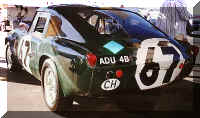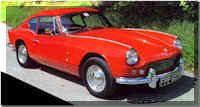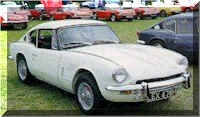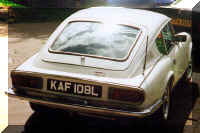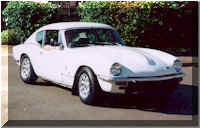 |
Despite
the formation of British Leyland, no attempt was made to rationalize the range of sports
cars for sale under the new umbrella - the Spitfire, the MGB, the TR6, Stag, MG Midget,
the GT6 and Austin-Healey Sprite - all continued to share the market. The real cloud on
the horizon was in fact, the increase of legislation, in the United States, on safety and
exhaust emission. Taking these facts into account, the intended full re-styling of the GT6
was modified (as with the Spitfire). Internal face-lifting of the seats, steering wheel
and badging took place prior to the official launch of the GT6 Mk3 in 1970. In line with
the Spitfire MkIV, the tail was 'chopped-off' and the bonnet flattened out. The rear roof
line of the GT6 was altered and petrol cap and door handles ceased to protrude creating a
more svelte look. |
